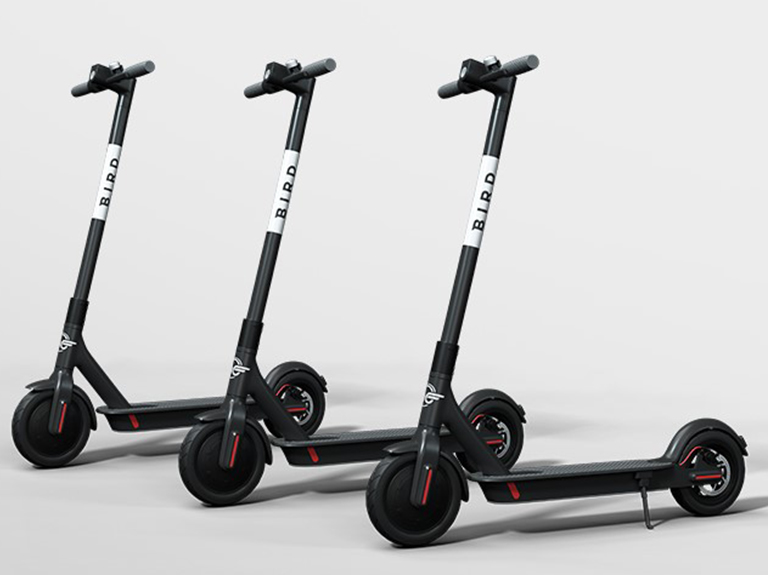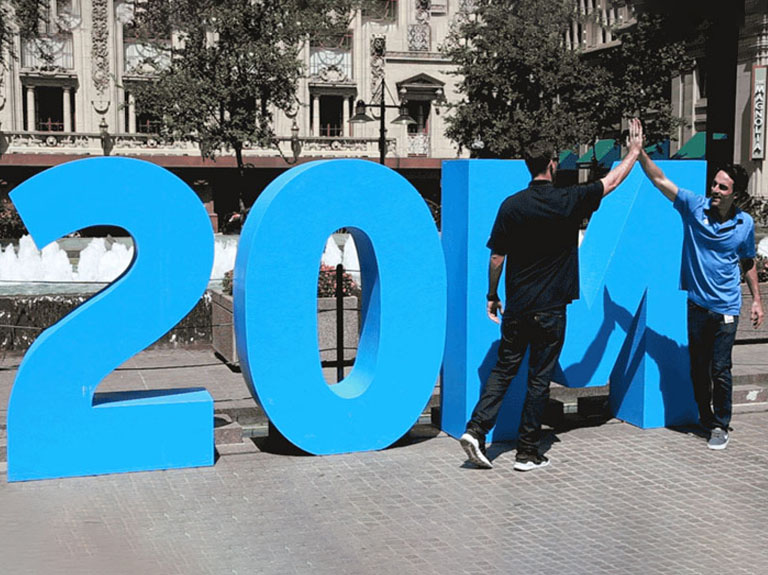AT&T Launches It Can Wait Campaign; Urges Mexico Drivers To Keep Eyes On Road, Not On Phones
9-in-10 Urban Mexicans Use Their Smartphones While Driving, Survey Shows
AT&T is introducing its It Can Wait campaign to Mexico. We’re calling on drivers across the country to keep their eyes on the road, not on their phones.
“No post, glance, email, search or text is worth a life,” said Thaddeus Arroyo, chief executive officer, AT&T Mexico. “Drivers who are paying more attention to their cell phones than the traffic around them are a leading cause of accidents and deaths in Mexico. We’re urging everyone to put down their phones when they’re behind the wheel.”
More than 9-in-10 (92%) urban Mexicans said they read or send messages or engage in other smartphone activities while driving, new research from AT&T shows. Nearly a quarter (24%) do it “all the time.”
We joined with government and community officials to launch an It Can Wait public awareness, advertising and pledge campaign in Mexico City today. We’ll expand the program to other major cities in Mexico next year.
In Mexico City, we will work with Mayor Miguel Ángel Mancera to share the It Can Wait message on city-owned billboards. The 16 municipalities Casas de Cultura will host neighborhood It Can Wait events that will include the virtual reality experience unveiled today. The experience simulates, in an immersive but safe 3-D setting, the potentially deadly consequences of even glancing at a phone while driving.
“Driving is a big part of the Mexico City experience, and people are passionate about smartphone communications,” said Mancera. “But using your smartphone for activities like messaging or social posts while driving is very dangerous. We look forward to working with AT&T to raise awareness of the dangers and help people change their behavior.”
AT&T first launched its It Can Wait campaign in the United States more than 5 years ago. Since then, the campaign has helped raise the awareness of the dangers to more than 90% of the population, and inspired more than 7 million pledges to not use smartphones while driving. More than half of the people reached by the message say they’ve changed their behaviors. And research on crash data shows a correlation between It Can Wait campaign activities and a reduction in crashes.
Our research found that 82% of Mexicans believe that distracted driving is very dangerous, yet many continue to do it.
AT&T will use the survey findings to help drive awareness of the dangers of smartphone use behind the wheel, and to encourage life-saving behavior change. Smartphone activities Mexicans say they do while driving include:
- Message2 (87%)
- WhatsApp3 (83%)
- Email3 (60%)
- Facebook4 (56%)
- Search the net (50%)
- Snap a selfie/photo (40%)
- Shoot a video (27%)
- Video chat (24%)
- Twitter4 (23%)
- Instagram4 (16%)
Other unsettling findings include:
- 75% keep their smartphones within easy reach while driving.5
- More than half (55%) of highly distracted drivers6 say they’re “addicted” to being connected to their phones.
- Only 71% of highly distracted drivers6 think using social apps while driving is very dangerous, compared to 90% of less distracted drivers.
- The younger the driver, the more likely they are to be highly distracted drivers6 (57% of 18-24 year olds versus 35% of those ages 45+).
- 76% of men surveyed think women are more likely to use their smartphone while driving; but survey results find men are as likely to be highly distracted drivers6 as women (51% versus 49%).
Visit www.PuedeEsperar.com.mx to learn more, and join the conversation with #PuedeEsperar.
*AT&T products and services are provided or offered by subsidiaries and affiliates of AT&T Inc. under the AT&T brand and not by AT&T Inc.
1. Research commissioned by AT&T and conducted by EthniFacts with fieldwork and sample managed by IPSOS Mexico. Polled 1,215 people in Mexico City, Guadalajara, Monterrey and other areas, ages 16-65 who use their smartphone at least once a day and drive three or more days a week.
2. Read, send or reply to a text or any kind of messaging app.
3. Read, send or reply.
4. View or post.
5. In their hand, lap or cup holder, or on the passenger seat or dash.
6. Highly Distracted Drivers are drivers above median based on aggregated average of 13 smartphone activities people said they do while driving.
About AT&T
AT&T Inc. (NYSE:T) helps millions around the globe connect with leading entertainment, mobile, high speed Internet and voice services. We’re the world’s largest provider of pay TV. We have TV customers in the U.S. and 11 Latin American countries. In the U.S., our wireless network has the nation’s strongest 4G LTE signal and most reliable 4G LTE. We offer the best global coverage of any U.S. wireless provider*. And we help businesses worldwide serve their customers better with our mobility and highly secure cloud solutions.
Additional information about AT&T products and services is available at http://about.att.com. Follow our news on Twitter at @ATT, on Facebook at http://www.facebook.com/att and YouTube at http://www.youtube.com/att.
© 2015 AT&T Intellectual Property. All rights reserved. AT&T, the Globe logo and other marks are trademarks and service marks of AT&T Intellectual Property and/or AT&T affiliated companies. All other marks contained herein are the property of their respective owners.
Signal strength and reliability claims based on nationwide carriers’ 4G LTE. Signal strength claim based ONLY on avg. 4G LTE signal strength. 4G LTE not available everywhere.
*Global coverage claim based on offering discounted voice and data roaming; LTE roaming; voice roaming; and world-capable smartphone and tablets in more countries than any other U.S. based carrier. International service required. Coverage not available in all areas. Coverage may vary per country and be limited/restricted in some countries.


